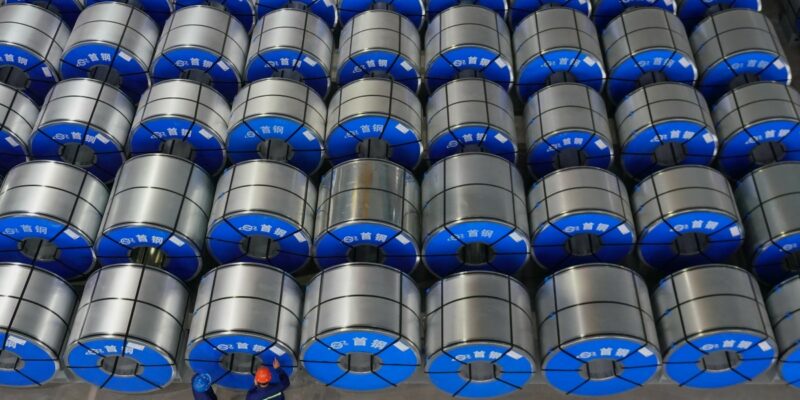Import volumes of basic steel (ST37 style for construction) into the EU rose sharply in the 3rd quarter. This massive influx of rolled material from Russia, India, Vietnam – but not from China, which has reduced its capacity – attracted by the high price level in Europe is a first threat to the high price policy that the major European steel producers are currently pursuing. They want the current price level to be maintained as much as possible, but this may prove more difficult for these basic steels.
It is not only these higher import volumes than in previous months that are putting pressure on market prices due to the reduced scarcity of basic steel, but there are also other factors that are causing a downward price trend.
First of all, there are the major problems faced by car manufacturers in the embarrassing shortage of semiconductors. In August alone, EU production was down by 19% compared to August 2020. This affects not only steel sales to carmakers themselves, but also to their suppliers. For the time being, no solution to this problem can be expected in the foreseeable future and the sector’s need for steel will therefore not improve immediately.
In the meantime, steel mills continue to produce their orders from the automotive industry, which means that stocks are increasing at the above-mentioned distributors.
In addition, the steel market is faced with stable to slightly falling scrap prices and a drop in iron ore prices in recent weeks. This is due to the decrease in production capacity that has been implemented in China. The Chinese government has decided that total steel production in 2021 should not exceed that of the previous year. This decrease in production has had an influence on the demand for ore, the price of which has fallen in the last month.
On the other hand, the largest mills in the EU claim to be full for this year, although the smaller mills in Central Europe are still offering some tonnage here and there for delivery in November-December. In Belgium and Germany, mills produced less steel in Q1, Q2 and Q3 consciously or due to technical or maintenance problems, which also increased scarcity.
However, these elements only concern basic steels. It should be noted that the more specific materials, which are in greater demand, such as precision steels, galvais, stainless steels and spring steels, remain rare and in short supply. Suppliers and intermediary resellers do not see an immediate decrease in the shortage and therefore in prices. Moreover, as soon as the current slump in the automotive sector has subsided, tensions could increase again.
The experts’ opinions on the price development vary considerably on this subject. Some experts believe that we will see lower prices during this month and next, but that an upward trend is to be expected thereafter. Others believe the opposite, that the boom in price rises is definitely over and that a downturn will follow in which the base price will fall.
There are arguments for and against both views. There are many ongoing developments that could affect the steel price: How much further will the economy grow? When will car production increase again? Will the EU import quota system be revised or not? Will European domestic steel production increase or stabilise? Will iron ore prices fall again or not? Will there also be a possible rise in interest rates, which could negatively affect the willingness to invest?
This means that it is difficult at present to make a clear prediction on the expected price development, but we should certainly not count on a price decrease in the short term, especially for non-basic steel.
The pressure on delivery times has not abated either and there are no indications that the current situation will change in the short term.
Filame therefore recommends that its customers carefully plan their requests for the production of parts taking into account the delivery times of the material and to possibly have price adaptations according to the time of delivery of the material, especially as no supplier currently commits to prices over several days and that for stainless steel the price of the alloy surcharge is that of the day of delivery of the material.
Summary of Noviostaal – het staaljournaal September and Filame supplier reviews

